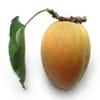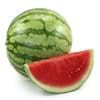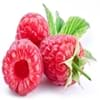Health Benefits
Arthritis treatment, Asthma treatment, Cancer prevention, Kidney stone treatment, Prevents constipation, Purging blood, Treatment of rheumatism
Arthritis prevention, Cancer prevention, Gout treatment, Heart care
General Benefits
Boosts immune system, Cures headache, Cures fever, Digestive aid, Flu treatment, Maintains healthy cholesterol level, Treatment of common cold
Anti-inflammatory properties, Boosts immune system, Controls blood pressure, Controls blood sugar levels, Cures fever, Digestive aid, Sore throat treatment
Skin Benefits
Heals sunburn, Reduces wrinkles, Skin rejuvenation, Treatment of acne, Treatment of skin diseases
Reduces wrinkles, Treatment of acne
Hair Benefits
Prevents hair loss, Treatment of dandruff
Promotes longer and healthier hair, Shiny hair
Allergy Symptoms
Eczema, Hives, Inflammation, Itching, Skin rash, Swelling
Anaphylaxis, Digestive Problems, Itching, Skin Rashes, Swelling
Side Effects
Diuretic effects, Heart burn, Tooth decay, Chances of sunburn
Allergic reaction
Best Time to Eat
Along with meal, Best to drink lemon water on an empty stomach., Don't consume at night and before bed
As a snack in the late afternoon, Don't consume at night and before bed, Eat the fresh ones, avoid mixing with any other foods, don't eat after meal., Morning time (before lunch)
Vitamin B5 (Pantothenic Acid)
Vitamin C (Ascorbic Acid)
Vitamin K (Phyllochinone)
Phytosterol
Not Available
Calories in Fresh Fruit with Peel
Not Available
Calories in Fresh Fruit without Peel
Not Available
Calories in Frozen Form
Not Available
Calories in Dried Form
Not Available
Calories in Canned Form
Not Available
Type
Citrus, Tree fruit
Tree fruit
Season
All seasons
Autumn, Summer, Winter
Varieties
Avalon Lemon, Bears Lemon, Buddha's Hand, Bush Lemon, Citron, Eureka Lemon, Dorshapo Lemon, Finger Citron and Fino Citron
Green Anjou, Red Anjou, Bartlett, Red Bartlett, Bosc, Comice, Concorde, Forelle, Seckel and Starkrimson
Color
Yellow, Yellowish-orange
Yellow
Inside Color
Yellow
White
Taste
Sour
Crunchy, Sweet
Origin
China, India
China, Japan
Soil Type
Well-drained
Clayey, Loamy, Sandy
Climatic Conditions
Hot, Sunny
Cold, Hot, Without frosts
Facts about
- Oil extracted from lemon peels is used for fingerboard of guitars.
- During Renaissance, ladies used lemons to redden their lips.
- Aroms of lemon decreases the level of stress hormones.
- The first pear tree was planted in North America in 1620.
- The Chinese considered the pear fruit to be a symbol of immortality.
- This fruit was used as a natural remedy against nausea in ancient Greece.
Other Countries
Argentina, Brazil, India, Iran, Italy, Mexico, Spain, Turkey, United States of America
Argentina, Belgium, India, Italy, Japan, South Africa, Spain, Turkey, United States of America
Top Importer
United States of America
Europe
Top Exporter
Mexico
China
Botanical Name
Citrus limon
Pyrus communis
Synonym
Not Available
Not Available
Subkingdom
Tracheobionta
Tracheobionta
Division
Magnoliophyta
Magnoliophyta
Class
Magnoliopsida
Magnoliopsida
Species
C. limon
P. communis
Generic Group
Citrus fruit
Rose
Difference Between Lemon and Pear
We might think that Lemon and Pear are similar with respect to nutritional value and health benefits. But the nutrient content of both fruits is different. Lemon and Pear Facts such as their taste, shape, color, and size are also distinct. The difference between Lemon and Pear is explained here.
The amount of calories in 100 gm of fresh Lemon and Pear with peel is Not Available and 57.00 kcal and the amount of calories without peel is 29.00 kcal and Not Available respectively. Thus, Lemon and Pear belong to Low Calorie Fruits and Low Calorie Fruits category.These fruits might or might not differ with respect to their scientific classification. The order of Lemon and Pear is Sapindales and Rosales respectively. Lemon belongs to Rutaceae family and Pear belongs to Rosaceae family. Lemon belongs to Citrus genus of C. limon species and Pear belongs to Pyrus genus of P. communis species. Beings plants, both fruits belong to Plantae Kingdom.









